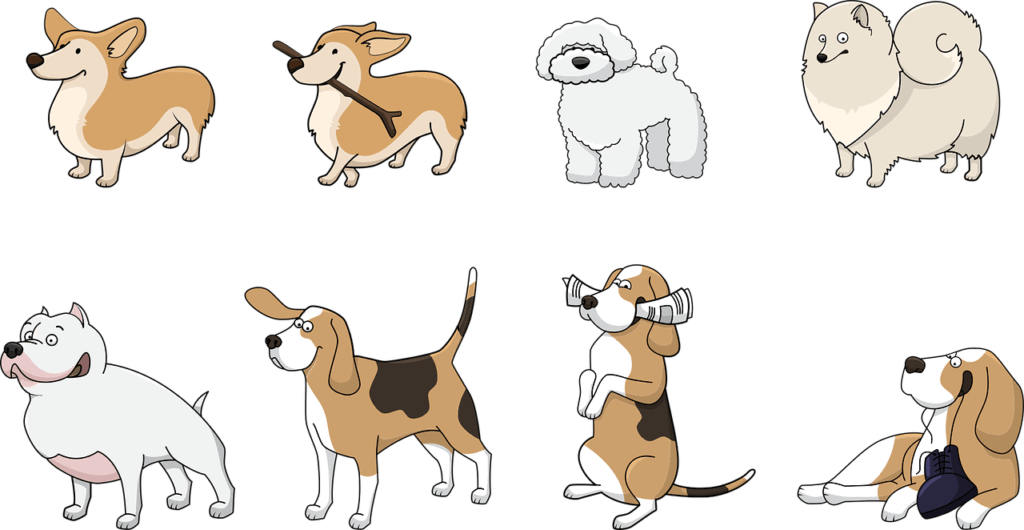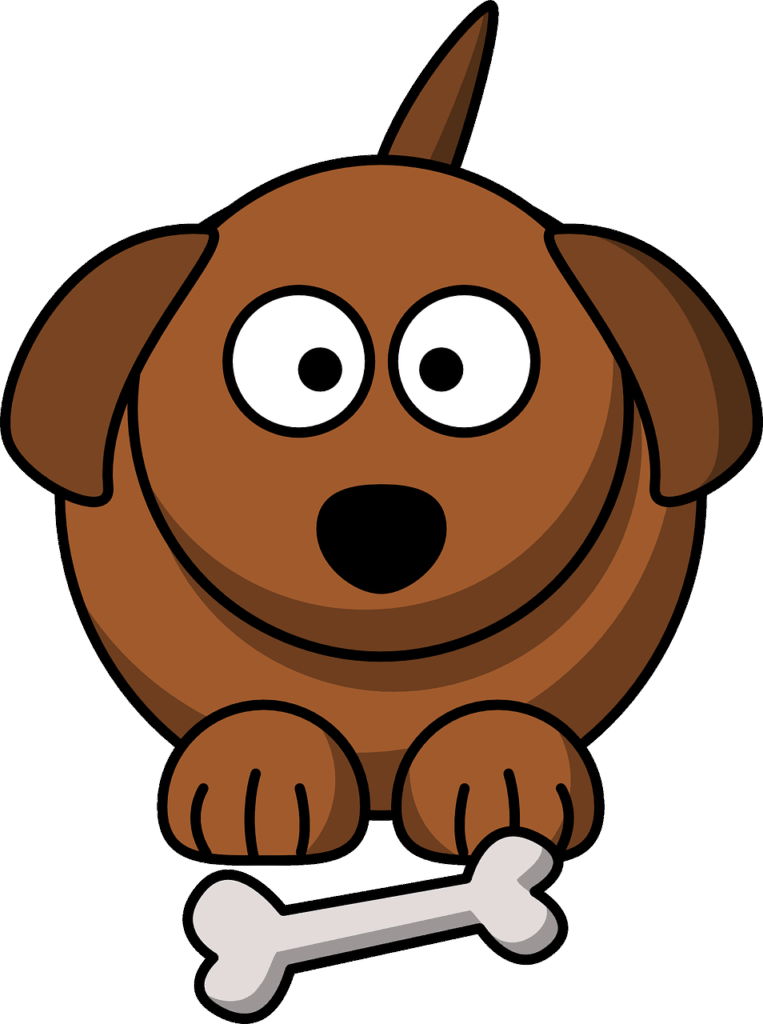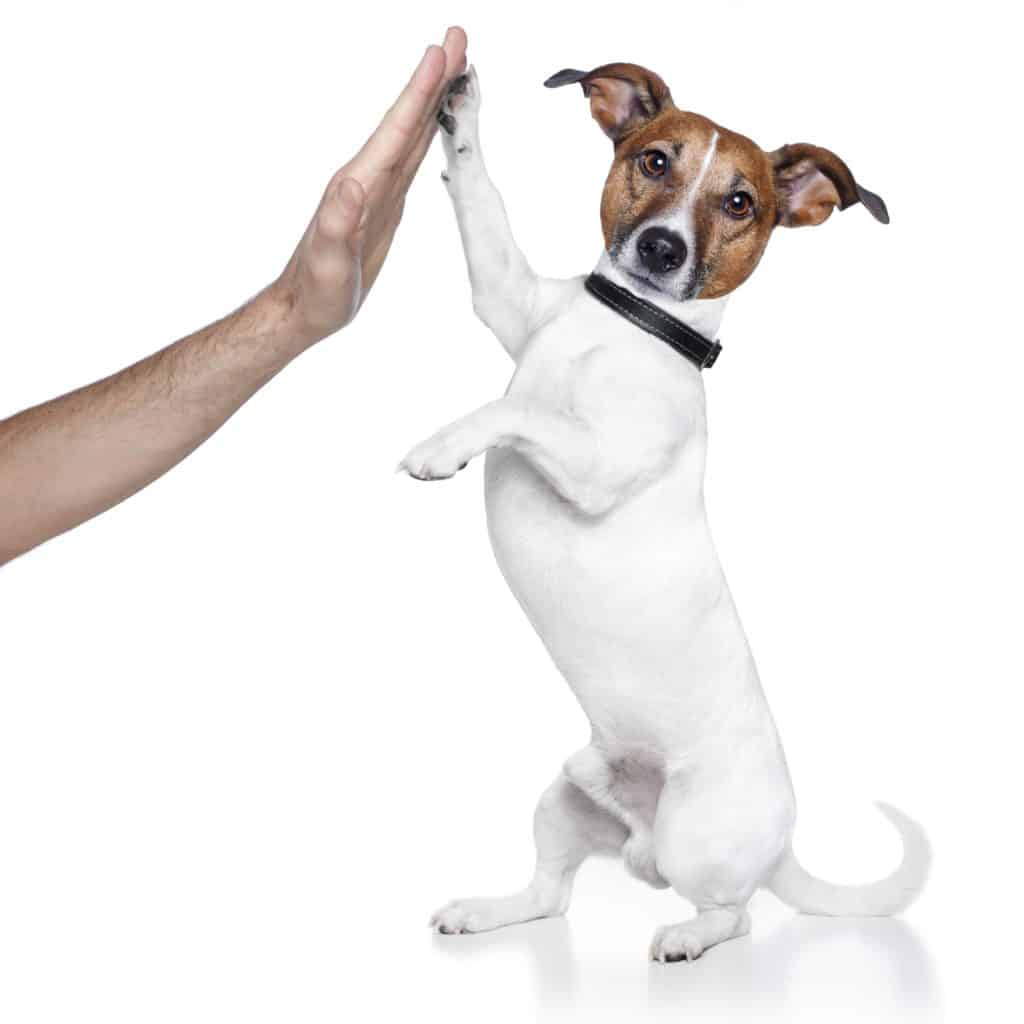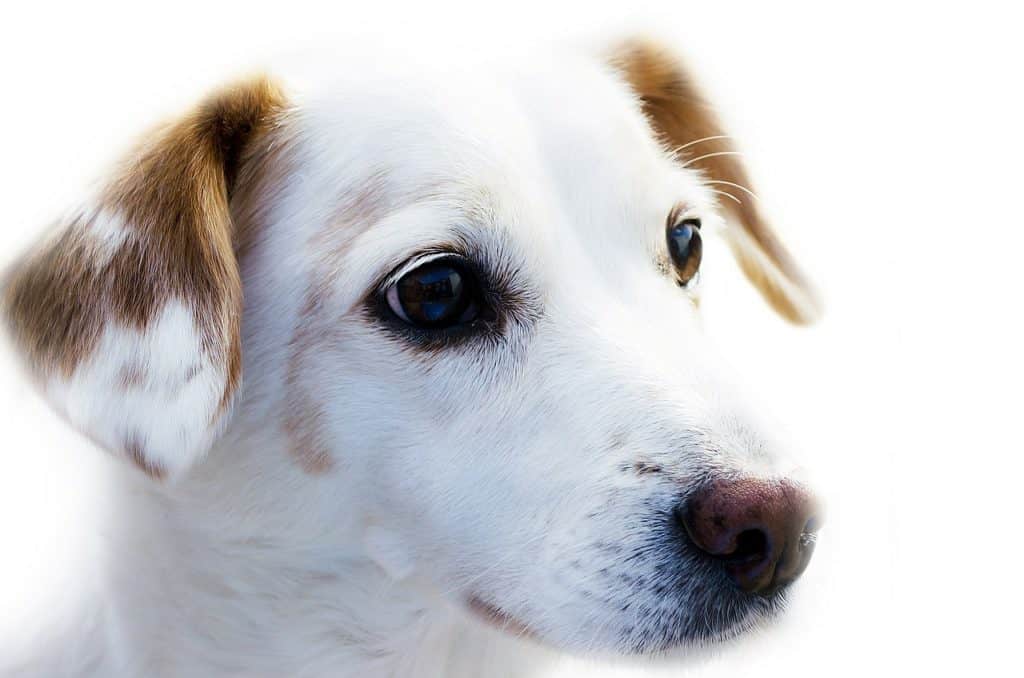HOUSE TRAINING DOG TIPS
1. Time to potty train your puppy?
Start taking your puppy outside to the bathroom when he’s 3-4 months old. Each pup is different, but start by going outside with him as soon as you wake up. Repeat at half-hour intervals while he’s still learning, although smaller dogs may need to go more often. Take him to the same spot each time, where he can smell his own scent. Patience is important, as there will be accidents at first! Just make sure that you have a safe spot that unknown dogs do not have access to since your pup may not be fully vaccinated yet!

2. Housetraining your puppy
If your puppy seems restless, or is barking, whining, or sniffing, he may need to go out for the toilet. If you’re currently training him, stay with your puppy while you take him out of the house to do his business. Reward him when he ‘goes’ outside, and he’ll quickly learn that he’s onto a good thing. Some nice words, a small healthy treat, or a little walk together down the street with you is often reward enough in itself.
PUPPY FOOD
3. Switching up puppy food brands
Changing up puppy food brands? Because puppies can have tender stomachs, the switch needs to be made gradually to avoid any tummy complications. Usually, a week is enough time to switch completely from one food to another – do this by swapping out some of your pup’s current kibble for the new brand, then gradually increase the ratio of new to old kibble each day. A gradual approach will cut down the chance of his getting an upset tummy from a sudden change.
4. Feeding your puppy
Puppies need to eat more frequent meals than adult dogs due to their growing bodies and how quickly they burn through their energy. The number of daily meals your puppy requires will depend on his size, age, and quite often, his breed. 3-5 daily meals is a general recommendation for puppies who are already eating solid puppy food. This may last to the 16-24 week mark, when you can gradually cut down to about two meals daily. Do remember that each breed is different, however, so check our breed pages for more advice. If you have a toy breed puppy, this is especially important since you have to keep a close eye on their blood sugar.
5. Switching from puppy to adult food
 At some point, the extra calories, protein, and fat that a ‘growth’ puppy food provides won’t be necessary for your dog any longer. When he’s ready for adult ‘maintenance’ food, he might show this by leaving some food in his bowl or skipping out on meals. He may even start to gain some weight and pack on the extra pudge. It’s recommended that you manage the switch to adult food gradually. Start with a 1:4 ratio of adult food to puppy food, then aim to reverse this over a week until your dog’s eating all adult food.
At some point, the extra calories, protein, and fat that a ‘growth’ puppy food provides won’t be necessary for your dog any longer. When he’s ready for adult ‘maintenance’ food, he might show this by leaving some food in his bowl or skipping out on meals. He may even start to gain some weight and pack on the extra pudge. It’s recommended that you manage the switch to adult food gradually. Start with a 1:4 ratio of adult food to puppy food, then aim to reverse this over a week until your dog’s eating all adult food.
6. Small breed puppy food tips
Smaller puppies need more calories for each unit of their body weight because they burn energy much faster than large-breed pups. Look for puppy foods that offer higher protein and fat, as well as a smaller kibble size for their little jaws-small kibble size means easier crunching! Small-breed puppies will also need to be fed more often, so aim for several smaller meals rather than bigger ones that are spaced further apart. This also helps to prevent hypoglycemia, which is a dangerous drop in their blood sugar.
7. Large breed puppy food tips
While quality proteins and fats are still super-important for large puppies like Labradors and German Shepherds, large-breed puppies have slower metabolisms than their smaller counterparts. Pay close attention to portion size to prevent overfeeding and obesity. Plus, some large breed pups tend to gobble! Good things to look for in large breed puppy foods include chondroitin and glucosamine, which help combat some common large breed problems like dysplasia and joint difficulties.
8. Giant breed puppy food tips
Your giant-breed puppy could be on puppy food for up to 24 months – try to find something high-quality that he really enjoys! Daily calories will depend on his activity level, size, and specific breed. Aim for puppy foods that are specifically formulated for growth and don’t use artificial preserving, coloring, or flavoring chemicals. Giant breeds can also be more susceptible to hip dysplasia than other puppies, so choose puppy foods with glucosamine, which helps to prevent this and promotes healthy bone growth.
9. Tips for feeding
Puppies can be pretty messy eaters – please don’t put the doggy bowl on your best carpet! If you have a tiled area that is easily wiped down or mopped, you’ll save yourself a lot of time in the long run. Put your puppy’s food and water bowls next to each other in a special spot that’s just his for mealtimes. It’s a big plus if your puppy can eat somewhere quiet without being disturbed or interrupted.
10. Good feeding practice
Remove your puppy’s bowl between meals if you want to manage overfeeding and potential obesity. ‘Free-feeding’ your puppy makes it difficult to keep track of how much your little one is eating, and helps to promote picky eating. It also makes it harder to notice if your puppy has lost his appetite and may be unwell. Removing his food bowl also helps prevent ants or bugs from getting in his puppy food, and can assist with regularity when you’re training him to go potty outside.
11. Overfeeding
Overfeeding and insufficient exercise can both lead to obesity and a range of other puppy health problems. All good puppy food brands come with recommended feeding guides for different sizes and breeds: these are a good starting point when deciding on meal size and daily portions. Try not to give your puppy table scraps or too many treats. If you’ve got more than one puppy, keep an eye out – some may try to sneak food from the other’s bowl!
12. Room temperature food
Puppy food often smells and tastes the best for our canine friends when it’s at room temperature, and a lot of manufacturers suggest this is the ideal way to serve your pup’s dinner. There are some occasions where you may want to heat up your puppy’s food slightly, such as if you’ve been storing wet food in the fridge. Anything around 100 degrees Fahrenheit is usually just right for most puppies, but if you have any concerns, do get in touch with a vet.
13. Puppies with sensitive stomachs
Sensitive stomachs can cause some puppies to have runny stools, gas, vomiting, or similar symptoms. If these symptoms are mild, don’t panic. There are many good puppy foods that cut out certain ingredients to help your best friend enjoy mealtimes without discomfort. Our special page for puppy foods for sensitive stomachs includes grain-free and limited ingredient options. If you think your puppy may be intolerant to certain ingredients in their puppy food, you may want to consult a vet to rule out any other complications.
14. Easily digestible ingredients
High-quality puppy foods often tend to be more easily digestible. This means that your puppy is able to break down, use, and benefit from a greater percentage of his chow, rather than turning it into waste. Look at the ingredients in your puppy’s food-high-caliber ingredients like real, identifiable meats and veggies are usually easier for your puppy to digest than ambiguous, low-quality products like by-products. Aim for foods with good amounts of protein and fat, rather than high amounts of carbohydrates.
15. Storing canned food
 Canned puppy foods typically last about three days in the fridge once opened. Use a special plastic lid or saran wrap to keep open cans covered. Don’t feed your dog wet food that’s been open more than 5 days, and definitely throw out opened food after a week. Empty your puppy’s bowl if wet food has been sitting in it for longer than 4 hours. Unopened food can be stored in a cool, dry spot until the due date on the can.
Canned puppy foods typically last about three days in the fridge once opened. Use a special plastic lid or saran wrap to keep open cans covered. Don’t feed your dog wet food that’s been open more than 5 days, and definitely throw out opened food after a week. Empty your puppy’s bowl if wet food has been sitting in it for longer than 4 hours. Unopened food can be stored in a cool, dry spot until the due date on the can.
16. Body Condition Scores
Your puppy’s Body Condition Score can help give you an idea of whether he’s overweight, healthy, or underweight. It’s a starting point for understanding whether he’s getting enough calories. Take a look at your puppy from the side and from above, then compare is ribs, waist, and abdomen to a Body Condition Score chart online. If your puppy is seriously underweight or overweight, it’s a good idea to visit the vet. If he scores between 4-5, he’s in good shape!
17. Wet or dry puppy food?
It’s a good idea to allow your puppy a mix of wet and dry puppy food. Variety is the spice of life! Dry puppy kibble is economical, stores for longer in the pantry, and almost always offers a balanced and complete diet for your pup’s growth. Wet food offers him moisture and a different texture. Good puppy food manufacturers will provide guides on how to mix wet and dry food in the right ratios, and some even offer tasty recipe ideas!
18. Puppy to dog
Puppies mature at different rates, however, a puppy is an adult once he’s reached his adult height. Smaller breeds may be ready for adult food after nine months, while larger breed pups like Great Danes may need up to two years before being fully developed. If you think your puppy is the right height and age to make the switch, look for other signs. Some dogs will start to leave food in their bowls simply because they don’t require the extra calories anymore.
19. What’s food rotation?
Food rotation involves switching up your puppy’s food between different brands or main ingredients. It’s a great way to make mealtimes more fun for your puppy while giving him a wider range of nutrients. A rotational diet can also help decrease the risk of your puppy developing intolerances due to overexposure to certain ingredients. A rotational diet doesn’t even require that you switch from his favorite brand, it’s as easy as a chicken main ingredient one month, and lamb the next! Just be sure to switch them over gradually to prevent an upset stomach.
20. Healthy treats
Treats should not make up more than 10% of your pup’s daily calorie intake. But don’t worry, veggies and fruits can be awesome low-calorie treats! Carrot sticks, runner beans, broccoli, and even watermelon are full of healthy antioxidants, vitamins, and minerals-and a perfect way to say ‘I love you!’ to your puppy. Avoid raisins, chocolate, caffeine, onions, grapes, or anything overly hard that he can’t chew. These can all be damaging to your puppy’s health. If you’re using treats to help with dog training then check out to find the best treats you can use for training.
21. Upset tummies!
Puppies can get upset stomachs for more than a few reasons, and intolerance or bad reactions to sneaky scraps are just two! However, gas, vomiting, or a runny puppy tummy can frequently be isolated events that don’t require any further panic on your part-good to know, right! If your puppy is showing these symptoms and discomfort for more than a few hours, though, a trip to the vet may be necessary to understand whether there’s a more serious underlying issue.
PLAYING WITH YOUR PUP!
22. Fetch!
Puppies love playing with you, but some may require more patience than others when learning to fetch. Find a toy your puppy loves, and throw it gently in a quiet and calm environment. He’ll probably run after it and give you that doggy look that says: “What now?” Take some steps backward and call him! After a few tries, your puppy should run back towards you. Then tell him to “Drop!” the toy. It sure sounds easy-but often takes several tries!
23. Shake hands
 Have treats ready if you want to train your puppy to shake hands! Put your hand out with your palm upwards at a height your puppy can reach, then wait. He’ll likely sniff your hand or try licking it at first, but the second he lifts his paw, praise and reward him! With many repetitions, your puppy will eventually realize that you want him to put his paw in your hand. Then, you can start using a verbal command too. “Shake!” works well!
Have treats ready if you want to train your puppy to shake hands! Put your hand out with your palm upwards at a height your puppy can reach, then wait. He’ll likely sniff your hand or try licking it at first, but the second he lifts his paw, praise and reward him! With many repetitions, your puppy will eventually realize that you want him to put his paw in your hand. Then, you can start using a verbal command too. “Shake!” works well!
24. Running with your dog
Not all breeds are cut out for long runs, unfortunately. If your vet says your puppy can handle running with you, it’s best to wait till he’s leash-trained. Take it slow at first, and start with short runs. Simply stop if he tries to pull on his leash, as this could lead to accidents. Say “No” if he’s trying to jump on you, but don’t be angry if he thinks it’s a game. Over time, you can build up to longer runs together.
25. Toy hunt!
If your puppy’s got a favorite toy with a name, like “Tennis Ball”, teach him Toy Hunt! Whenever you say “Tennis Ball” and he looks at you, give his toy to him. Start playing Toy Hunt by hiding his toy under a cushion or similar so it still peeks out, then use another command, like “seek” or “find”. Shower him with praise each time he retrieves it! With practice, he’ll be able to find his toy even if you hide it completely!
LOOKING AFTER YOUR PUP
26. Trim your puppy’s nails
Start early if you want your puppy to get used to having his nails trimmed. Waiting too long or avoiding the issue completely can cause your pup’s nails to grow to an uncomfortable length, and they may be naughty during the trim. Begin by trimming just the tips of his nails if you’re concerned about hurting him, and always avoid the ‘quick’, which is the skin underneath. While you might need some assistance holding your puppy still at first, he should get accustomed to having his nails trimmed over time.
PUPPY BEHAVIOR
27. Chewing behavior
Lost a beloved pair of shoes to little puppy teeth? Puppies can chew if they’re teething, bored, stressed out, or in need of a little attention. Give your puppy something of his own to chew on-something that’s not going to splinter, crack, or form sharp pieces that he might swallow. Try special pet chewing sticks, rubber bones, or a ball that can be filled with treats. Keep your valuables and any dangerous items away from your puppy at all times.
28. Begging behavior
 Puppy dog eyes are irresistible, we know, but giving table scraps to your pup is the first step towards begging behavior. If you want to look after your puppy’s diet, prevent potential obesity, and eat your dinner in peace, try not to pay him any attention at all when you eat. Get everyone in the house on board! Tell him to “Sit” or “Stay” during human dinner time, and don’t do anything to make him believe scraps are coming his way.
Puppy dog eyes are irresistible, we know, but giving table scraps to your pup is the first step towards begging behavior. If you want to look after your puppy’s diet, prevent potential obesity, and eat your dinner in peace, try not to pay him any attention at all when you eat. Get everyone in the house on board! Tell him to “Sit” or “Stay” during human dinner time, and don’t do anything to make him believe scraps are coming his way.
29. New puppy collar?
Your needlepoint dog collar should sit nicely around his neck, with space for two of your fingers to fit comfortably inside. Let him sniff his collar if he’s never seen one before, and try to introduce it to him for the first time when he’s happy and relaxed. Reward him with praise and treats when you put the collar on, and check that it’s not making him uncomfortable. Remember, puppies grow fast-either get an adjustable collar or be prepared to replace it frequently!
30. Taking your puppy outside
It’s recommended that you only introduce your puppy to the outside world about a fortnight after his second round of vaccinations (usually when he’s 14 to 16 weeks young). Rushing this will mean exposing your puppy to potential infectious diseases while his immune system isn’t ready to fight them off. On your first trip outside, introduce him to a safe outdoor area that you’re sure is safe, and keep a close watch over him. Oh, and expect a lot of cute sniffing!